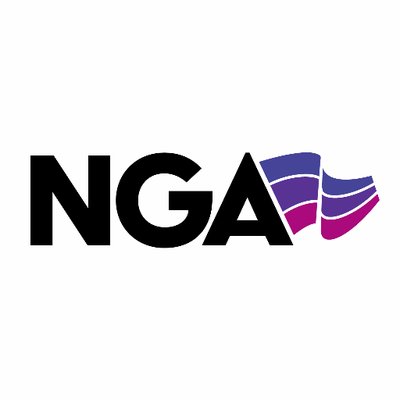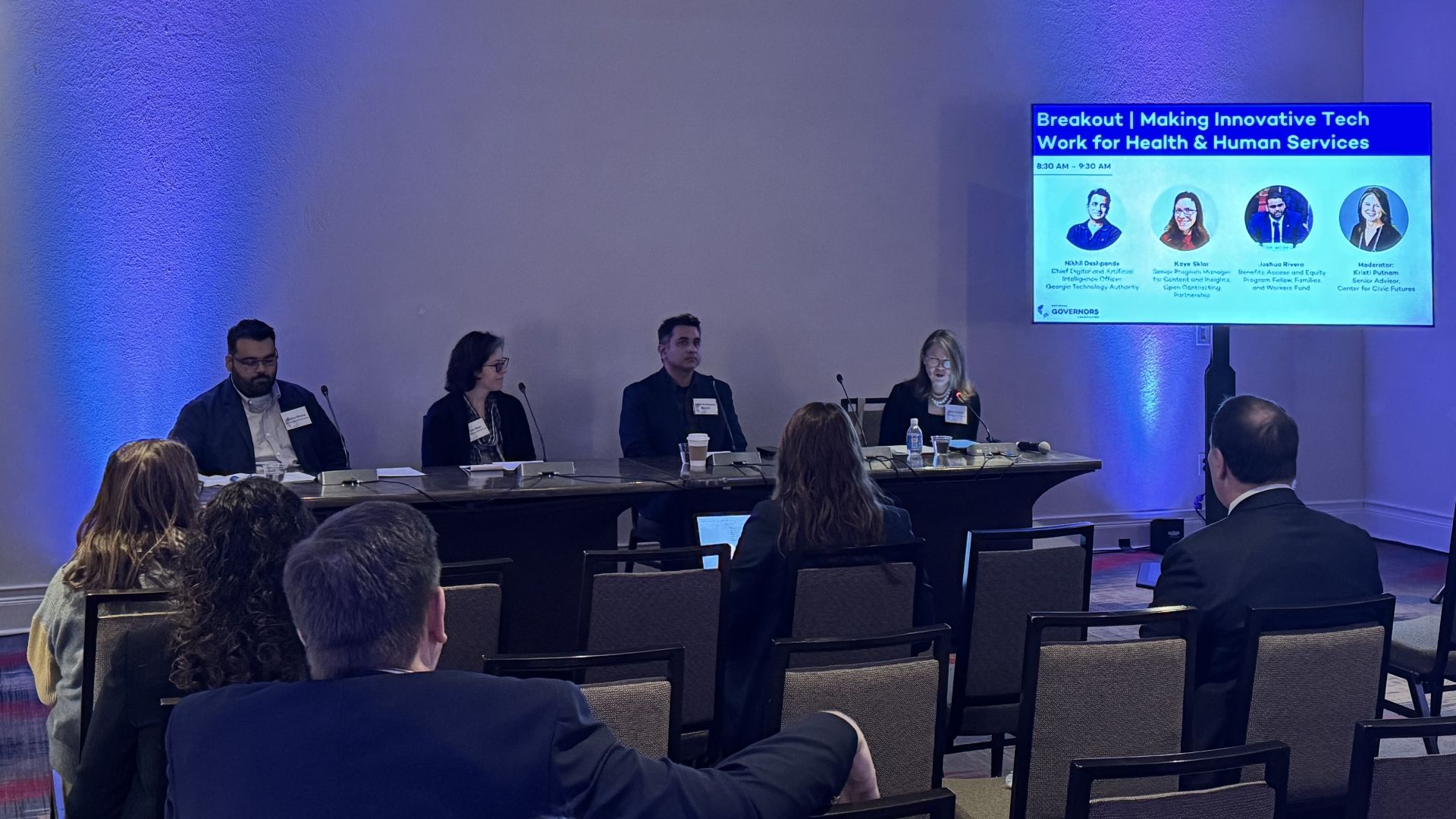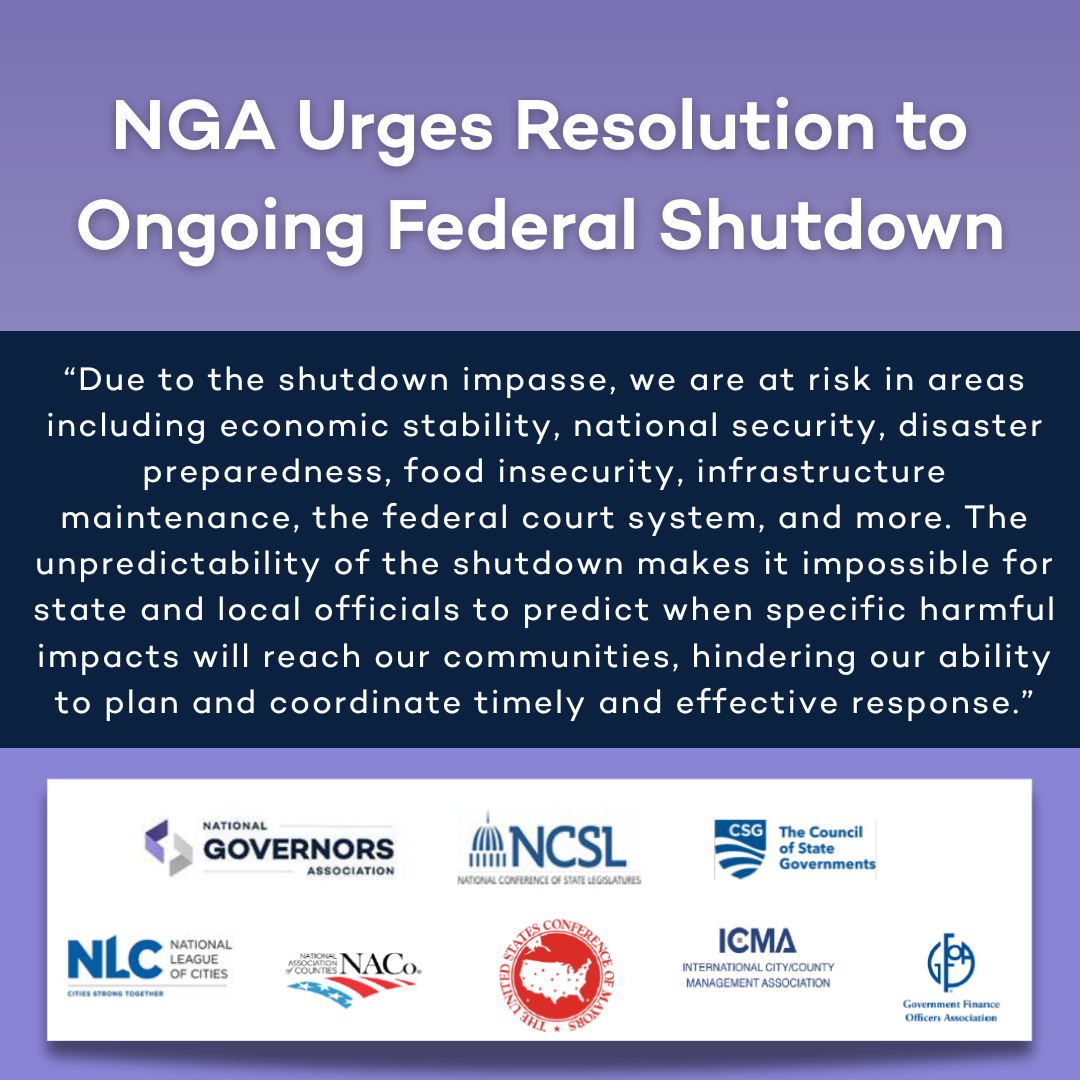States and Territories faced significant challenges during the 43-day federal government shutdown, especially in continuing to operate and deliver in the human services space. Delayed benefit delivery to the Low-Income Energy Assistance Program (LIHEAP), confusion around distribution and benefit allocation of the Supplemental Nutrition Assistance Program (SNAP), a lapse in Head Start funding, and reductions in force (RIFs) and furloughs pressure-tested States and Territories as they worked to continue administering vital programs that children and families rely on.
On November 19th, 2025, the National Governors Association (NGA) hosted a conversation with the Human Services Policy Advisors network on these pain points and best practices States and Territories can leverage to better prepare for and navigate future funding disruptions.
A recording is available here. Please contact the NGA Children & Families team for the password.
Shutdown Pain Points
- SNAP: Whereas the Federal government was able to utilize flexibilities to release funding for the Supplemental Nutrition Program for Women, Infants, and Children (WIC), USDA determined it would not utilize contingency funding to enable SNAP payments for November during the shutdown. As a result, November benefits were not delivered on time, and states had to navigate conflicting guidance and legal uncertainty while attempting to maintain important nutrition access for families.
- LIHEAP: At the onset of Winter, some States and Territories will have to delay LIHEAP payments to beneficiaries until at least December, per HHS’s indications that funding is expected to be released by the end of November.
- Head Start: Head Start programs across 40+ States and Territories did not receive their operational funding on November 1, 2025, leading to program closures in 7 states and Puerto Rico. Closures affected more than 9,000 children and families when programs had to close their doors.
- RIFs and Furloughs: In addition to RIFs at the federal level and a lapse in communication for some federally administered programs which complicated states’ access to information and guidance, some States and Territories furloughed staff as they could not operate at a deficit to administer programs
- Child Care Subsidy Freezes: Some States and Territories have had to implement freezes for new applications given projected delays in funding and/or anticipated budget constraints in FY2026.
Key Takeaways
- Lack of Administration Capacity: States report needing flexibility to make operational changes that can accommodate the realities of continuing operations when funding is not available due to a funding disruption that is beyond states’ control. Some states reported funds were available for distribution to beneficiaries, but they had no staff or programmatic support available to perform disbursements due to necessary furloughs and RIFs.
- Use of Flexible Funding: Leveraging Temporary Assistance for Needy Families (TANF) funding to supplement lost benefits afforded flexibly funding during the shutdown; others cite technological and program administration challenges when exploring these opportunities, and report exploring ways to streamline processes for future funding disruptions.
- Necessity of Contingency Plans: States and Territories leveraged contingency plans from previous shutdowns and lapses in federal funding to make difficult decisions around key programs; a critical component of such plans being identification of triage team members with identified prowess in nimbleness, ready to be mobilized to respond to emergencies.
- Lapses in Benefits had Cascading Impacts: Missed SNAP benefits, delays in LIHEAP, and Head Start program closures all had trickle-down impacts on child welfare, early care and education, and did not exist in a vacuum. Recognizing these downstream impacts allowed States and Territories to target support for children and families and triage resources to the populations most in-need.
- Compliance Operations vs. Communications to Stakeholders/Beneficiaries: Conflicting information from Feds and legal challenges introduced new hurdles to both administering benefit delivery programs, and communicating policy and operational decisions to States and Territories faced uncertainty when communicating guidance to stakeholders and beneficiaries of affected programs. States relied on peer-sharing to help supply best practices for facilitating communications to beneficiaries.












